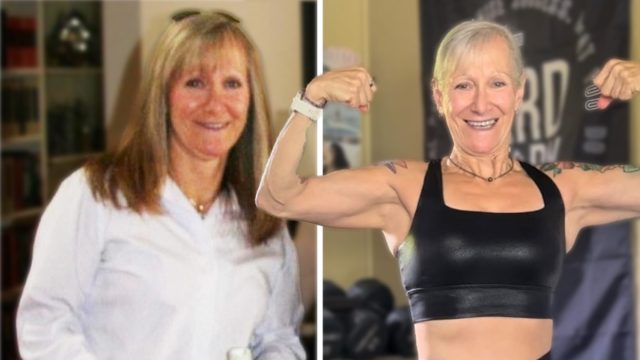She Lost 40 Pounds at 61 by Reverse Dieting and Doing These 8 Things

Weight loss in your 50s and 60s may seem impossible – but it's not. According to one expert, you may even be able to shed pounds by doubling your calorie intake. Ilene Block is the founder of Silver and Strong, a coaching company that specializes in helping women over 50 get into the best shape of their lives. She lost 40 pounds at 61 (and 55 pounds altogether) by making a few simple changes to her routine. "At 61 and overweight, I went from eating 1,000 calories a day to over 2,000 in six month,s and here's what happened," she writes. "I lost 40 lbs!" she reveals in the post. "A reverse diet is the process of gradually increasing your calories over time to repair your metabolism. Here's how you do it," she says.
Assess Your Starting Point
First, assess your starting point. The first thing to do is track current intake. "Log everything you eat for a few days to confirm you're consuming 1,000 calories," says Ilene. Next, establish maintenance needs. "Use a calculator or consult a coach to estimate your true maintenance calories."
RELATED: 20 Superfoods for People Over 50
Set Your Goals
Next, set your goals, starting with shifting your focus to building muscle. "Weight training will help ensure that the additional calories you are eating are used for muscle growth and repair rather than fat storage," she writes. Also, accept temporary weight fluctuations. "A slight weight increase is normal and doesn't mean fat gain. If you're eating more, especially carbs, your body will retain a certain amount of water," she says.
Increase Calories Gradually
Next, she recommends increasing calories gradually. "Start with +5-10% per week," she writes. "Add 50–100 calories to your daily intake each week, focusing on nutrient-dense foods."
RELATED: I Got Into the Best Shape of My Life at 50 by Following These 6 "Basics"
Prioritize Macronutrients
Another essential thing to do is prioritize macronutrients.
Protein: "Aim for 1g per pound of goal body weight," she suggests.
Carbs: "Gradually increase carbs to fuel workouts and promote recovery (this should be the remainder of your calories," she says.
Fats: "Maintain healthy fat intake (20-30% of total calories)," she adds.
Monitor Progress and Adjust
And monitor progress and make adjustments. "Track Your Metrics: Monitor your weight and measurements (chest, waist, hips, thigh), and how you feel (energy, sleep, mood)," she writes. "If no significant weight gain occurs, increase calories again the following week."
Incorporate Resistance Training
Next comes exercise, which she recommends resistance training. "Lift heavy weights 3-5 times per week to maximize muscle growth and metabolic adaptation," she says. Also, avoid excess cardio. "Too much cardio can counteract calorie increases by burning through them."
RELATED: I'm 50+ and These 7 Fat-Blasting Habits Keep Me in the Best Shape of My Life
Transition to Maintenance
Now it's time to transition to maintenance. "Once you reach 2,000 calories (or your calculated maintenance level), stay consistent (and be patient to get here). You should be experiencing improved energy and the freedom to eat more without gaining weight," she writes.
Do a Cut to Lose Body Fat
Lastly, it's time to do a cut to lose body fat. "After being in maintenance for several months, if you want to lose body fat, you can now do a traditional diet (where you are in a caloric deficit) and lose fat while maintaining your muscle mass," she says. And if you enjoyed this article, don't miss I'm a Nutritionist and Here Are 25 Weight Loss Truths You Need to Hear.




